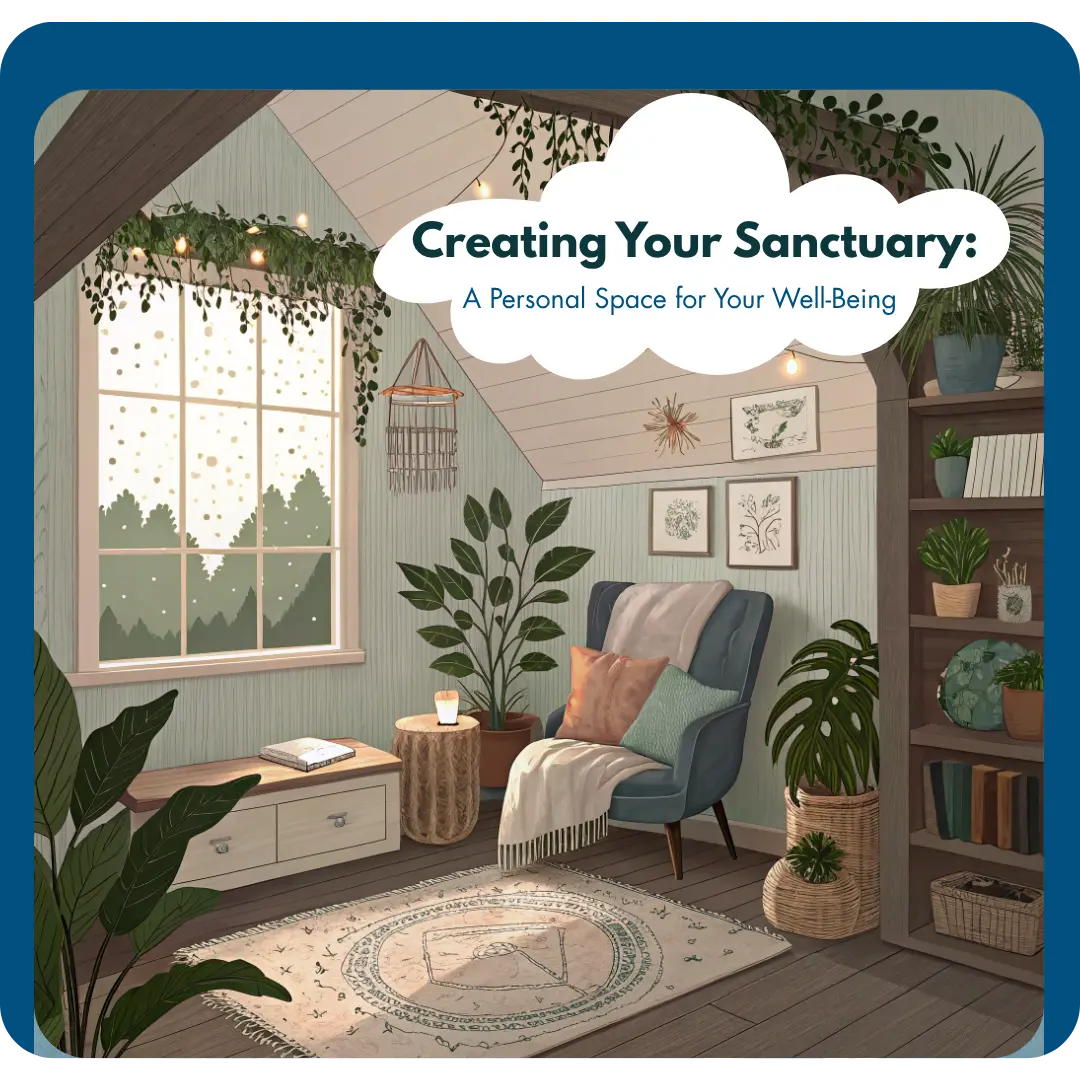Creating Your Sanctuary: A Personal Space for Your Well-Being
Table of Contents
In today’s fast-paced world, finding inner peace can be tedious. Stress, anxiety, and emotional turmoil are common experiences for many people. However, creating your emotional sanctuary—a safe space within yourself—can be a powerful way to achieve emotional resilience and well-being. This blog will guide you through the steps to build your emotional sanctuary, a place where you can retreat, recharge, and find balance amidst life’s chaos.
The Concept of an Emotional Sanctuary
An emotional sanctuary is a mental and emotional space where you feel safe, calm, and centred. It’s a place where you can process your feelings, reflect on your experiences, and nurture your inner self. It is a space of no-judgement, no-expectations, no-rejections and no-separations. You get to be the beautiful, crazy, evil and kind you without worrying about the opinion of others. Creating this sanctuary involves cultivating practices and habits that promote mental health and emotional well-being.
Key Elements for creating an Emotional Sanctuary
Reclaiming the Fragmented Parts of Us
There are these parts in us all that are stuck in past situations, traumas, relationships, jobs and places. Reclaiming those parts is the first step towards building the emotional sanctuary. These parts of us, referred to as the Inner Child, can be reclaimed through inner exploratory work and therapy such as regression and Systemic Family Constellations.
Processing Repressed Emotions
Processing repressed emotions involves acknowledging and confronting feelings that have been buried or ignored over time. It requires creating a safe space to explore these emotions, often through therapy, journaling, or mindfulness practices. By identifying the sources of these emotions, individuals can begin to understand their impact on their current behavior and mental state. The process includes expressing and validating these feelings, which can lead to healing and emotional release. It’s a gradual journey that fosters self-awareness and emotional resilience, allowing for healthier coping mechanisms.
Creating Boundaries
Establishing healthy boundaries is crucial for protecting your emotional sanctuary. This means learning to say no when necessary and prioritizing your well-being. Setting boundaries helps you avoid burnout and maintain a healthy balance between work, relationships, and personal time.
Self-Compassion
Being kind to yourself is a vital component of an emotional sanctuary. Self-compassion involves treating yourself with the same kindness and understanding that you would offer a friend. It means acknowledging your imperfections and mistakes without harsh self-criticism.
Physical Environment
Your physical environment can significantly impact your emotional state. Creating a peaceful and comforting space at home or in your workspace can help you feel more relaxed and centered. Consider incorporating elements like soothing colors, calming scents, and comfortable furniture to enhance your emotional sanctuary.
Positive Affirmations and Journaling
Positive affirmations and journaling are powerful tools for reinforcing positive thoughts and feelings. Regularly writing down your thoughts and affirmations can help you shift your mindset and focus on your strengths and accomplishments.
Steps to Build Your Emotional Sanctuary
Identify Your Needs
Reflect on what you need to feel emotionally secure and at peace. This could include quiet time, creative activities, or physical exercise. Understanding your needs is the first step in creating a space that nurtures your emotional well-being.
Create a Routine
Establishing a daily routine that includes activities promoting mental and emotional health is essential. This could involve a morning meditation session, a daily walk, or an evening journaling practice. Consistency is key to maintaining your emotional sanctuary.
Seek Support
It’s important to recognize that you don’t have to navigate your emotional journey alone. Seeking support from friends, family, or a mental health professional can provide valuable insights and guidance. Supportive relationships can enhance your emotional sanctuary by offering comfort and understanding.
Practice Self-Care
Prioritize self-care activities that nourish your body, mind, and spirit. This could include hobbies you enjoy, a nutritious diet, regular exercise, or adequate rest. Self-care is a fundamental part of maintaining your emotional sanctuary and overall well-being.
Creating your emotional sanctuary is a journey of self-discovery and self-care. By incorporating self-exploration, setting healthy boundaries, and practicing self-compassion, you can build a safe space where you can find inner peace and resilience. Remember that your emotional sanctuary is a dynamic space that evolves with you. As you grow and change, so will your sanctuary, continually supporting your emotional well-being and helping you navigate life’s challenges with grace and strength. By following these steps, you can create an emotional sanctuary that serves as a foundation for a happier, healthier life.
—
Sonali Mittra, Emotional Resilience Coach and Director, Treta Foundation
FAQs
It means a calm space in your life or home where you feel safe, relaxed, and able to recharge your body, mind, and soul.
Because having a dedicated space can lower stress, help you focus on self-care, improve mood, and support mental clarity.
Start small: pick a corner, add things you love (plants, candles, favorite chair), remove clutter, and make it feel cozy.
Soft lighting, natural textures (wood, linen), calming colors, plants, aromatherapy, comfy seating, and something personal (books, art).
Yes! Soothing scents like lavender or eucalyptus, plus gentle sounds (nature, soft music) can calm your nervous system.
Definitely. Muted, soft, earthy tones (greens, blues, neutrals) help your brain relax more than bright, sharp colours.
Use things that connect to you: a favourite blanket, photos, artwork, textures and scents you love.
Daily if possible—even 10-15 minutes. Use it when you feel stressed, before sleep, or when you need to reset.
Not at all. Even a small corner works. It’s about intention and how you feel there, not size or cost.
Some relief can come immediately (as soon as you sit there), more lasting calm usually builds over days or weeks of consistent use.




